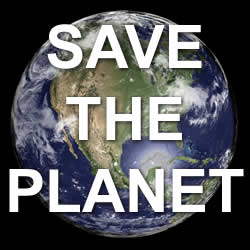What's Next? Great Pacific Garbage Patch Dolls
Shilo Zylbergold | Best Medicine

image by: Adam Jones
It's like going to the moon and finding a crisp packet - Dr Kerry Howell, Deep-sea ecologist
Back in 350 B.C., a Greek philosopher by the name of Plato wrote about a once powerful marine civilization that lived and flourished on a large, continent-sized island somewhere in the middle of the Atlantic Ocean almost ten thousand years earlier. The island was called Atlantis, and legend has it that the gods were angered by the sinful pride of its people and, in a single catastrophic day and night, punished the whole lot by sinking Atlantis to the bottom of the ocean. For over a hundred centuries now, it has been prophesised that one day the gods would forgive and the “lost continent” of Atlantis would once again rise to the surface.
The much awaited prediction seems to have come to fruition, apparently. What couldn’t have been expected is that this long-lost continent would pop up not in the Atlantic Ocean, but in the middle of the North Pacific. And what has proven to be completely astonishing is that instead of reappearing as the one-time advanced civilization it had been, what we have drifting out there is a continent of floating plastic.
Yes, out there from 135 to 155 degrees West longitude and 35 to 42 degrees North latitude (somewhere this side of the Hawaiian Islands) lies The Great Pacific Garbage Patch. Some scientists have dubbed it “The Pacific Trash Vortex” while others refer to it as “The North Pacific Subtropical Refuse Convergence Zone”, but let’s agree to simply call it “The Patch”.
Since its discovery in 1988, the Patch has continued to grow in area. Just exactly how big is The Patch? That’s a hard question to answer. Estimates vary from 0.41% to 8.1% the area of the Pacific Ocean. That means its size could be the equivalent of a large continent like Europe or Africa or perhaps that might be an over-exaggeration and it may only be as big as an American state such as Texas or California. However you want to look at The Patch, it weighs in at an estimated 100 million tonnes (imagine how many baggies and plastic Coke bottles that would take), which ironically means that the world’s largest landfill lies smack-dab right in the middle of the Pacific Ocean.
Why is all this plastic garbage sitting there in one area of the Pacific instead of being spread out all over the globe? Because of the earth’s tilt and also because of its spin around its axis, there is a clockwise spiral of currents created in the gyre of the North Pacific which has commonly been called the “Horse Latitudes”. Think of the flotsam and jetsam as being caught in the perpetual swirl of a toilet that will not flush.
Why should The Patch bother us? What harm can a pile of decomposing plastic do to us out there in the middle of the Pacific? A lot of it has to do with jellyfish. Now you may have a picture in your mind of a jellyfish trying to get it on with a Glad baggie, but it turns out that the problem is much more serious than that. You see, as the polymers in the plastics are broken down by the combination of sea water and sunlight, they produce an exceptionally high concentration of pelagic plastics and chemical sludge. As these plastics continue to degrade, they release a toxic “soup” of PCB’s, PAH’s, and DDT into the surrounding water. And the jellyfish eat this stuff! And other things eat the jellyfish...
Wait. It gets worse. Not only are these toxins deadly to fish, birds, and marine mammals that ingest the affected jellyfish, but they also are able to insidiously fool the endocrine systems of these organisms that are higher up in the food chain into thinking they are metabolizing the sex hormone, estradiol. This results in a disruption of the whole hormone production system (and may explain why you don’t want to be found anywhere near a black-footed albatross suffering through hot flashes, a stellar sea lion with excess testosterone, or especially a great sea turtle experiencing mood swings caused by vaginal dryness).
Arguably, at the top of this food chain lie you and I. We may try to absolve ourselves of any guilt by claiming that we never throw our plastic into the ocean so what does this have to do with us? Blame it on the thousands of cruise ships and freighters plying the shipping routes all across the globe.
Although this excuse may carry some truth to it (a typical 3,000 passenger cruise ship produces over eight tons of solid waste per week, much of which goes overboard), it is estimated that eighty per cent of the floating continent of plastic in The Patch comes from land based sources. As you can see, the finger points right back at us.
Maybe we can take a page from the city of Seattle’s playbook on plastics. In 2008, the citizens of the Emerald City used almost 300 million plastic bags as well as almost 70 million paper bags. Although most of the paper bags made it back to recycling, only 13% of the plastic ones did. We can only assume that the rest of them ended up in landfills or somehow found their way to the sea (perhaps to drift for months until finding their way to The Patch to possibly spawn with jellyfish).
Scientists believe that over 100 million tons of plastic are generated annually and ten per cent of it ends up in the oceans. A 6000 mile long ocean current connects the eastern patch (Hawaii east to California) to the western zone (all the way to Japan). An area totalling 1.6 million square kilometres lies within this plastic graveyard.
If that wasn’t bad enough, we now find that a similar patch, the North Atlantic Garbage Patch, has now taken residence in another of our great oceans.
Seattle’s solution has been to ban plastic bags outright. Starting July 2012, citizens of the city were no longer allowed to obtain a single-use plastic bag in any grocery or retail store in the city, and were forced to pay a nickel fee for the use of a paper bag. Other American cities are following the lead and a ban on plastic bags have been legislated in San Jose, Eugene, and Austin.
By 2021, the Canadian government will also outlaw single-use plastic (everything from plastic straws and cotton buds to drink stirrers, plates and cutlery). According to United Nations statistics, 127 countries have placed some kind of ban to regulate the use of plastic bags.
Nobody asked me, but it seems we don’t have too many choices left when it comes to dealing with excess solid wastes and especially discarded plastics. I suppose we could figure out a way to “mine” the polymers from that swirling graveyard in the North Pacific, melt them down and pour them into moulds, and then market the suckers as “Garbage Patch Dolls”.
The other choice is to come to some sense of sanity and start following Seattle’s example. But it seems the way we’re going may once again invite the wrath of the gods and the whole kit and caboodle of us, plastic and all, will once again sink Atlantis-like to the bottom of the sea!

Introducing Stitches!
Your Path to Meaningful Connections in the World of Health and Medicine
Connect, Collaborate, and Engage!
Coming Soon - Stitches, the innovative chat app from the creators of HWN. Join meaningful conversations on health and medical topics. Share text, images, and videos seamlessly. Connect directly within HWN's topic pages and articles.









.jpg)






